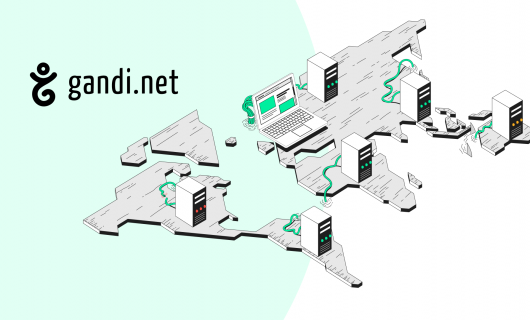The idea of exchanging asynchronous messages electronically in a way analogous to sending letters in the mail—the basic concept that we now call email—has been around since the invention of the electrical telegraph in the 19th century. More specifically, the concept of sending and receiving such messages over a network of computers dates to the early 1960s, and some of the first electronic mail protocols for exchanging such messages on the internet (or its precursor the Arpanet) came not long after.
Even the specific protocols used for email today are nearly 30 years old, which is maybe not so long in the grand arc of human history, but in computer and internet history, that makes email practically ancient.
Today, social networks and instant messaging systems like the proprietary Slack platform, which recently for the first time was preferred over email by survey respondents and the open-source Matrix communication protocol (in conjunction with free, open-source clients like Element that implement Matrix) harness the latest developments to offer greater flexibility and more features than email for businesses to use. And that’s not to mention the various social media platforms with their own integrated, direct, private messaging services.
Is email on its last legs, then? Are these new services about to put a dying communication method out of its misery? Let’s take a look.
What is email?
First let’s take a look at what email actually is. On a technical level, there are two aspects you can look at: the message itself, and the protocols used to send them.
What’s an email message?
A single instance of a message sent and received over the internet using mail servers in the specific format associated with email is called, not surprisingly, an email.
An email has two basic parts: the header and the body.
Header
The header of an email contains information about the email. If you have ever sent an email, some of this will be familiar to you — like the “To” address, the “Subject,” the “Cc,” address — but it also includes pieces of information about an email that you probably haven’t thought about, like a message-specific ID number, and information that gets appended to the email about when it is received by specific servers on its route to being delivered.
Body
This, of course, is the actual content of the message. Originally, the body of an email was sent in plain, ASCII text — that means no accents, no formatting (not even bold and italics), and above all no images or link (except ones you copy and paste into a browser).
Now, emails can be sent in HTML, that is, using the same kind of formatting code as webpages. That enables emails to not just include characters outside of the basic ASCII characters, but also colors, fonts, images, links, buttons, columns, and more. This is all thanks to MIME — the internet standard data format that uses ASCII characters to encode HTML so that emails can be as dynamic, appealing, and interactive as a basic webpage.
How are emails sent?
The other thing that “email” refers to is the way in which emails are sent. Email is sent by a set of “agents” that are each responsible for some part of the process of sending email. It starts with an “email client.” An email client is just a computer program you use to send and receive email. Some commonly used examples are Outlook, Gmail, Thunderbird, and Apple Mail.
When you send an email from your email client, it then goes to the mail server you have configured for your email client to send email through. For example, if you use Gandimail, that would be Gandi’s outbound mail servers.
There may be a few more stops along the way (these are called relays), but eventually, the email passes to a software component that’s responsible for delivering the message to the email client of the person you entered in the “To” address.
As with anything related to the internet, sending and receiving emails depends on a set of standardized protocols that computers use to communicate with one another. In the case of email, those protocols are POP, SMTP, and IMAP. POP and IMAP are protocols for an email client to connect to a mailbox and download messages and SMTP is for sending email.
Does anyone use email anymore?
Yes!
Maybe you feel like you’re the only one using email anymore, but that’s not true!
According to Radicati, who release an annual email statistics report, 319.6 billion emails were sent worldwide in 2021. That’s 4.3% growth over 2020. Similarly, they reported the number of worldwide email users is increasing by 3% per year, reaching 4.1 billion users in 2021. That’s over half the world’s population!
Another sign that email is still alive and kicking is how it’s adapting to the times.
According to The Inbox Report in 2018, 75% of email users in the US check their email from their smartphones versus 29% from a desktop or a laptop. And it’s the younger generation leading the way on this trend, with more than 81% of 18–24 year olds in the US checking their email on their phones (source).
Another way email is evolving with the times is the expansion of its use to purposes beyond just personal communication. In fact, 83% of consumers prefer businesses contact them via email (source), and email is a preferred form of communication for business. This approach enables internet users to maintain control over their personal data thanks to opt in and the strict protections put in place by the GDPR since May 2018. Email is also the preferred form of communication for many businesses.
Why is email still a thing?
So why is it that such an old technology is not just hanging on, but truly central to the modern internet? Especially when there are now so many options for communication.
Well, there are a few key reasons.
Email addresses are easy to communicate
The format for an email address is not just widely known but truly a part of the English language. Everyone knows the format: [name]-at-[domain]-dot-[tld]. Not only is the format easily parsed, but it’s easy to put on business cards, résumés, and wherever.
When you hear an email address, it’s easy to remember or to write down. That makes it easy to tell people your email address over the phone, in a text, or on a sign-up form online. Email’s ubiquity also means everyone is familiar with it and so there’s no ambiguity about how to contact you with an email address if you give it to someone.
While this same convenience exists for some social media, it’s less easy to communicate how exactly to reach someone in other types of communication. In terms of ease of communication and memorization, it’s hard to do better than email.
You can choose which app to use for your email
Another reason email is still king is because it’s not tied to a specific app. To use Slack, you need the Slack app. To use WhatsApp, you need WhatsApp. To Facebook message someone, you have to have a Facebook account (and all of the collection of your personal data that entails).
Not so for email.
You can use a whole host of applications to access your email, and even get your email from any number of providers. You’re not locked in to an app or a platform in order to use it to communicate, and the person you’re communicating with doesn’t need to have the same app or platform as you in order for them to receive your message.
You can use a desktop application like Thunderbird, Outlook, or Apple Mail (amongst others); you could use mobile versions of the apps and others; or you could just use a webmail interface on your desktop or your phone to read your emails.
Email is used for more than sending messages
Another thing contributing to email’s staying power is that it’s not just used for sending messages, but often gets used for other purposes as well.
Scheduling
A prime example is the use of email for scheduling purposes. Many email applications now have calendars built in, and with event invitations—especially meeting and videoconference invitations—sent as attachments to emails, this integration is easy.
File transfers
Another way email is used is as a convenient way to transfer files. The common use of email attachments enables small files, especially documents, to be sent and received easily. Email contact lists make this file sharing easier since the same identifier you use to contact someone else is used as the identifier of the final destination for the file as well.
Of course, any file you send over email is also not private (unless you’re using PGP), and could conceivably be intercepted.
Account logins
And speaking of a common identifier, one of the greatest aspects of email’s staying power is its use across the internet for account logins. The email address has become the username of choice for many website authentication systems, uniting an easy-to-remember identifier with a means to contact the account owner in case a password reset is required.
This is no small thing, and it’s important to remember that even new messaging services like Slack rely on email for account creation. So even if Slack can replace the use of email in some settings, it cannot fully usurp a communication medium that it partly relies on to provide its own.
Email provides a lot of data
Finally, email is still around because of how much data it can provide. Newsletters, promotions, and more all still travel over email, particularly if the purpose is marketing, because of the tools and ability that exists to collect information about how many of those emails are received or bounce, how many of them are opened, how many links are clicked in a given email and which ones, as well as how many people unsubscribed after a given email was sent.
This enables email marketers to nurture their relationship with their customers in a more fine-tuned way, and it can create sophisticated maps of customer journeys in a way that no other communication medium has proven capable thus far.
This may not necessarily be a good thing in terms of data privacy, depending on your perspective, but it is certainly one reason why email has been able to hang on as a primary means for companies to reach their customers.
What about spam, viruses, and malware?
There is, of course, a flip side to email. We’ve already mentioned the data privacy issues raised by some types of email tracking and the fact that unencrypted email (the majority of all email) can be viewed by others.
The other flip side to email is the existence of abusive practices like spam, and the sending of viruses or malware over email.
As of 2022, according to some sources [link to: https://dataprot.net/statistics/spam-statistics/ ]nearly 85% of all emails are considered spam, costing businesses around $20.5 billion per year.
This is a serious problem, especially when it goes beyond spam to messages that are outright malicious, including requests for money from Nigerian princes, empty threats of extortion, and phishing, where fake emails purportedly from trusted sources request login or transaction information.
The fight against spam is important, and one that goes on behind the scenes of the everyday internet. Thankfully, filtering technology now shelters most users from the majority of spam, scams, and malware.
Furthermore, the existence of these threats is proof itself that email is a popular communication medium. Other mediums like social media are not impervious to these threats either, and platforms like Slack avoid it through a closed garden approach that limits the inter-accessibility of users across organizations.
Conclusion
To sum up, email is far from dead. It’s alive and kicking, surveys about email vs. Slack notwithstanding.
Not only is email a core internet protocol, it’s a concept that dates back more than a century, to the very beginnings of the internet.
That doesn’t mean that email is without its problems, though. Spam, scams, phishing, and malware remain a serious concern for any email user.
But just because email is not going away, doesn’t mean that its use isn’t changing. The 83% of users who prefer businesses to contact them via email, and the fact that email is used broadly for account logins both indicate a change in attitude towards email. Email is still the universal asynchronous communication platform, but more importantly, it’s now the essential communication medium between websites and their users and especially businesses and their customers.
Far from dead, email has never been more alive.
Get your custom email address today
Tagged in Webmail



